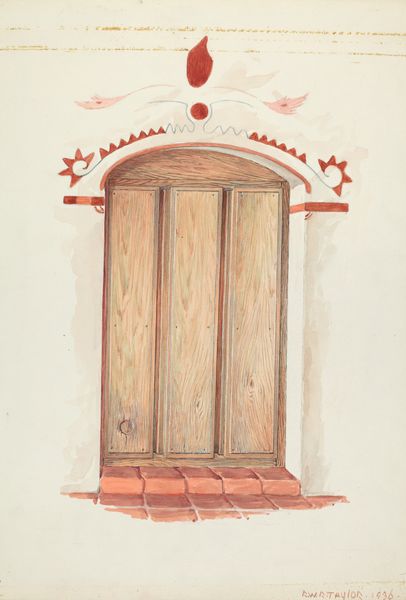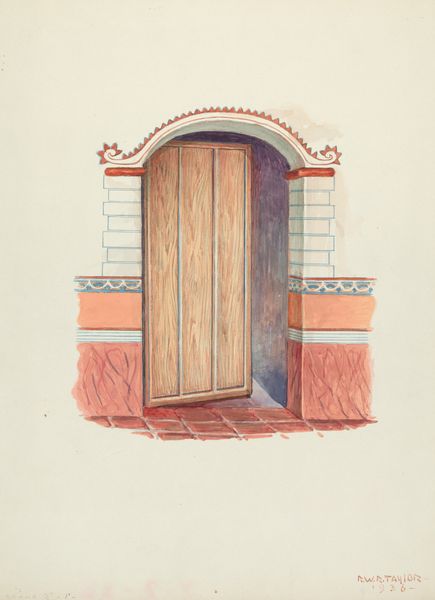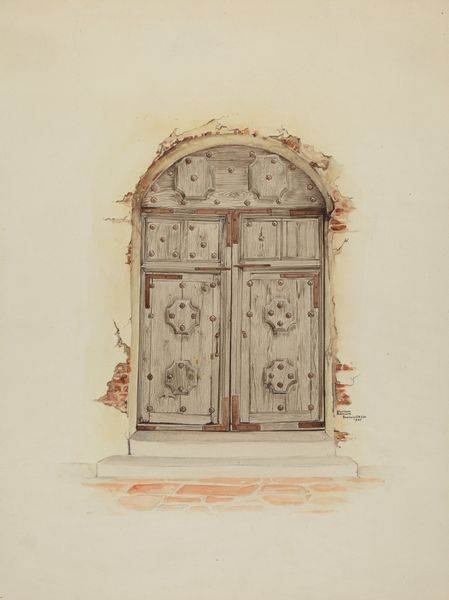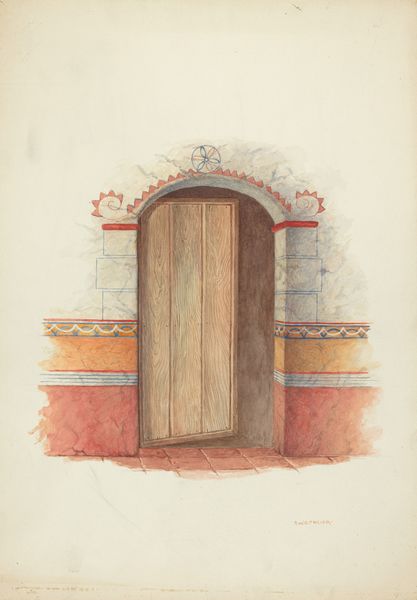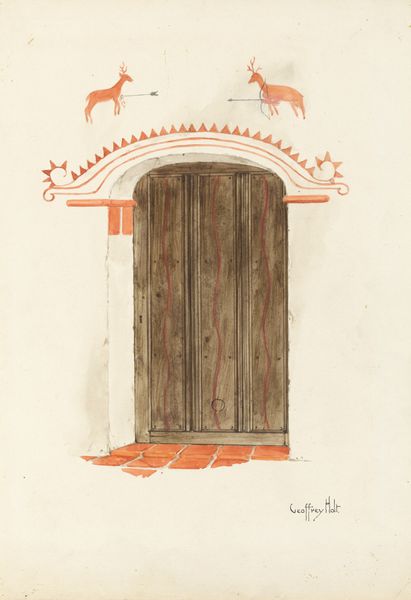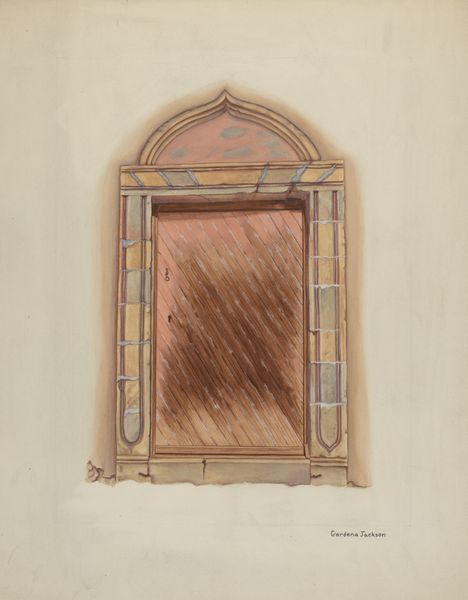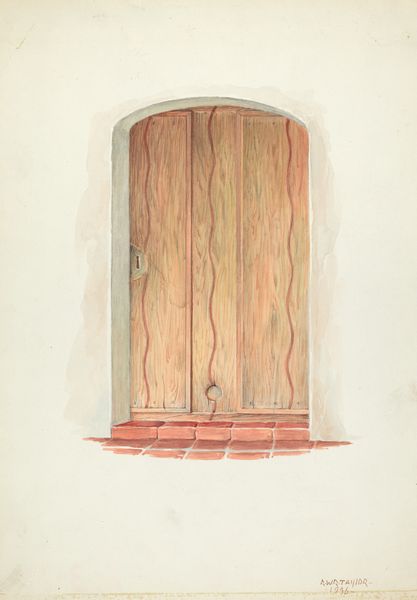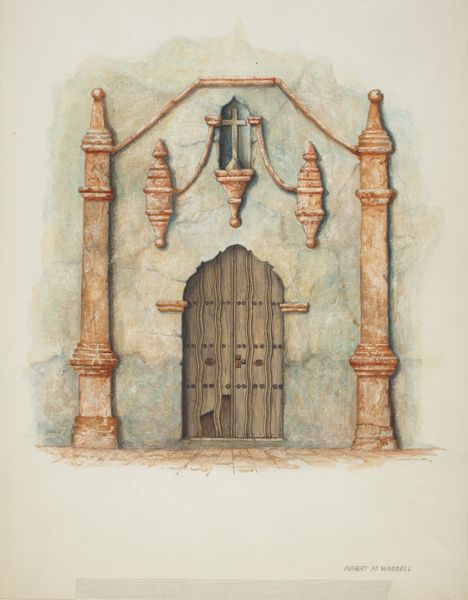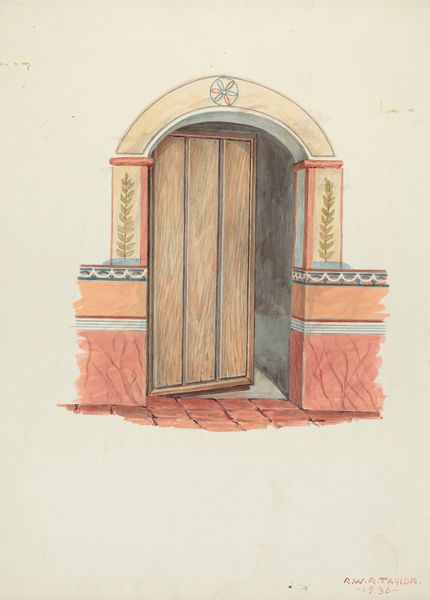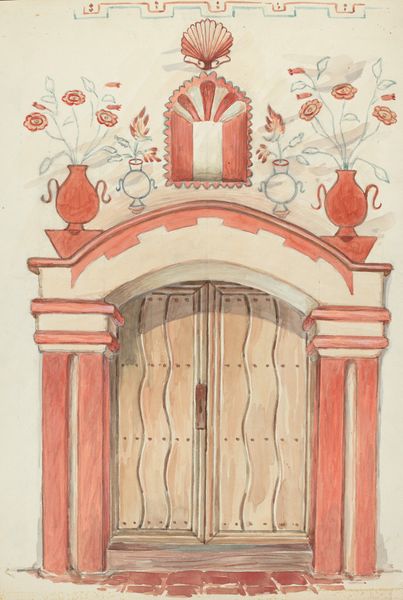
drawing, painting, watercolor
#
drawing
#
painting
#
landscape
#
watercolor
#
coloured pencil
#
watercolour illustration
#
regionalism
#
watercolor
Dimensions: overall: 33.1 x 23.9 cm (13 1/16 x 9 7/16 in.)
Copyright: National Gallery of Art: CC0 1.0
Curator: This is "Mission Doors," a watercolor and colored pencil piece by Warren W. Lemmon, created between 1935 and 1942. Editor: Immediately, I am struck by the quiet solemnity of this architectural portrait. The muted palette lends it a sort of sun-drenched stillness, reminiscent of long afternoons in a forgotten courtyard. Curator: Yes, the tonal range certainly contributes to that affect. Notice the artist’s restrained yet confident brushstrokes and their articulation of form. Observe how he captures the subtleties of light playing on the door's carved surface and on the weathered stone of the archway. Editor: Precisely! But this depiction goes beyond just aesthetic representation, wouldn’t you say? The image of the mission door invokes thoughts about power, access, and historical narratives embedded within the architecture of colonialism. How might we unpack the significance of this portal as both a barrier and an entry point, considering its place within the California mission system and its impacts on indigenous communities? Curator: The repetitive vertical striations create both division and visual continuity, which emphasizes structure. But your observation adds an important dimension. Lemmon’s precise handling of perspective further focuses our attention on the immediate visual structure before us. Editor: And yet, is the act of framing, of isolating the doors in such a way, also a kind of historical amnesia? The painting encourages an analysis of form and detail but risks obscuring larger stories of cultural and political consequence intertwined with these architectural spaces. This prompts necessary critical thought! Curator: That said, the careful composition reveals an artist deeply attuned to the visual nuances of the built environment and the ways color, texture, and light interact to create a harmonious, if reserved, whole. The use of colored pencils really brings an added level of visual sophistication to what could have otherwise become simply another pale landscape. Editor: Indeed! By foregrounding questions about who is included, and perhaps even more urgently, who is deliberately excluded from historical visibility, the painting functions as a portal in itself, initiating much-needed and timely conversation about representation, memory, and historical justice in California.
Comments
No comments
Be the first to comment and join the conversation on the ultimate creative platform.
